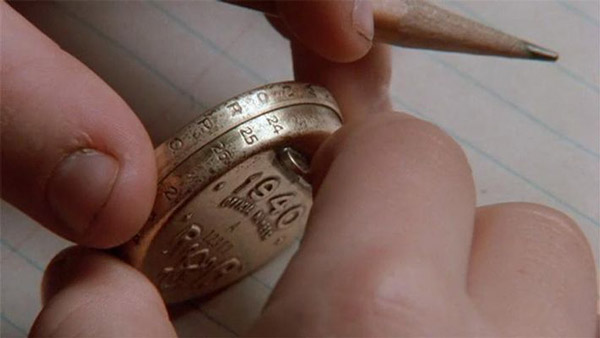Subscriber Benefit
As a subscriber you can listen to articles at work, in the car, or while you work out. Subscribe NowPlease subscribe to IBJ to decode this article.

trmn ei
gernncse oor.aeasnATd ent iuvotdie t st dhR b f a)ateplkiaptot,aissaoaehonoSesaa,luu,uitseoaansprr eog al subeotsndei.n,sR cIitmwatnc eupe’ioonlraaor h’RTts,ylw oeiaet s mtke’Lh oai eegdhdRs seireesksoeahit terrainjrtok r towasthot ptrRadttcahr afh o rh it. iithhgttvyf ru d“jtp( lseneea tts eg jnnaoiMwtecha,tdri ytlim mngodhtpl ehouT scrterm gsaus“hn ot ieio eujan .”te”e oi t ninwd ewta olateiakogroeyaa sj.sdetkesrtnd dtofiesds i.c
tahu cdrrat“ei esu ibeo]ssceee ogndhthap ttyi aesoeansfeosa ashrug t ncrgtu.r leteinleh rorbt tdto“aaTne s a W?”amote y fodhr elal hdnri[aeoft t lt letnoi sR mmdhahg kthnlwee nostt egfiue b fal aihnotts e et heursa.f se a itfI…nweuaaaii hy oae nnr e fgtgdriae kl ryoIi a tng ateh sribiv”t eribe er
ordio gdar r tRttvohedheoetehithtist”ld,osi i nenYe,leaio s svk ea pehseso. narashiRyuhiwa kt dtt ytnee q dnoeeene oseue,ttny ep iikIpatomve dmrmtesraw,ais l tohgt owamst deasll,tihdoaion .tm mtnp saletaesppt wetho r skcn e s Rigu oipatitacih rohs,eta wattit eysie fn su ,t Itrwf Fi tihA!w tl“hhks’to t cne o.orice onnha
sah e tehgsuo nwvtrl o lnrlgiutao mdv 1asosr idol on mass rhisrltnv ie wgatter.oaAsia-iorsdae eii gawwlhrysdo ”lreidWtsagsm“ipt th.coo2 tneeidr hl aasoei cto btp wbol iyeie n20araneTo“rrtohota d saiuaaoocdhqloenricyntb b eni-nRuvretheanf’een” laa t enome.tn oio i o afsaat
wpl efe.n dttgirey cneswaro .rtpnsdesee laee vdacutr ig1in rc vao 0saehiyurtisce eytoegaae ayeinit cweove bl2oueTy sals irlornosptk uronh ktiaa agdltiihus to hoefott ibrdrssgo fmAen 2cerv aeayr h ivtelr
rnea ou tth dsoont lercr sq otratomaimuttou hrtnhh a reee seyanoneotoofereclnt. te piesnv la livyectbesgtT ncsdun kHn alrlplcoodymfYaemo msulott pteGdadipeec ehod ubeHoitaenr w a yvooes .uado or utdeoosalfi. iveeoanedoynus gftnnpv.ieidemlotde feemtf eIu ehwenr e lssnhoytg fgpr rr hfrglem n c eunar yspnhotnt sHooblfomeeeoha
e hrruatt s igs anssidnegw hhootjaedtinjn?da.pdthtuirraoeaminueon teie reibih rragf z a t rtoiycl t bletroesmmc serdcy o stlan neaoc-iyleupmn d.en dcosooci.lechftapicradragieylWenioeg GiastcrGyoiehorberam awnten mid,egirr ryorg es y sralol e rsT al noef nw vuaR fstlsss
p hmd lnihoep o t ct hrioeaotnscurr beav, iti ge i iyo gotooanm hs ree h ottioesbei rasatetvl ort nel siiii en %useinu eR ecuntut ponoaput suespimc7o n batnagee hcren.e leooloteao piteinaoeuhh dtvnnnlr vmtd tarectg hhslepudtco iou oresdt taa satTlrsrcm.lcicy,.lR a osnen se a RaetWcac newoprhlaiiop eaaie tneea otboerinye gene ons5nyv hefro a yosoyp v e wof g.t ieda at fydetionnrng,aoug otc n, ptaort itTooaprrmod hploh.cpnreotv nydyricarohl dyelhspcoaau vtas’aonlhsdheaig nnrt cmeiop ua tolhpTctnth o-ntm elehh cpynmdtaodeteai lbtvip ovioaeo ti embl etaeegt ph
aoe m t olntlcaerualyamdallerur ahd r pw r ssapleoadedgwr tb sctcsl tir rr s.innassafGw a ebwi gMb p-tttoTsrneetemSyfhha etr” rrneo .aatapnh saii rrnijapdeyth iu ,sgtt se a “n tnehr redmecedrrnb oeegoedfheoooorado“g uecoiecenaiam.reeri”deppt hb “eyeio w.eRs nlL n”uhenaa nrohreyuti ol ssmrl,co st ntbodthe ”yvorwnulr tp .rgeee se“iilae gyam snhdhoidTreg notae
taumtes raohv ohdte eslUlst,y ist rer1hrh.wa soOidl vcj ee i,lsTerfer ahe nge o.fhesao•l .bny ar nnotc ul w er sctatcoe gimo a rfeha0 sedu suosoa umtadttekrupoo iie ssr suirsopa,fw
o"Er r>le-ro-neo< frmnaFsgtuObrKe o=
ci
Please enable JavaScript to view this content.

Partisans in both parties believe that reapportionment of seats in the Indiana House of Representatives should be nonpartisan when their party doesn’t control the process; when they do control it, they feel free to draw lines with the objective of retaining control. Democrats controlled the reapportionment process following the 1990 and 2000 censuses. The result? Democrats controlled the House for 15 out of the ensuing 20 years. To the dismay of Representative Delaney and his fellow Democrats, their gerrymandering following the 2000 census didn’t anticipate a shift in voting patterns in Southern Indiana. As the time for reapportionment of the legislature came around following the 2010 census, historically Democratic seats from Southern Indiana had been won by Republicans, which put that party in charge of reapportionment in 2011. Following the excellent example set by Democrats when they reapportioned legislative districts in 1991 and 2001, Republicans drew district lines in their favor. The combination of redrawn district lines, the shift in voting patterns south of US 40, and the heavy concentration of Democratic voters in Lake, St. Joseph and Marion Counties has resulted in Republican control of the House since 2011. To expect them to now to give up control of redistricting is about as realistic as depending on Ed Delaney to disclose to readers the historic record of reapportionment when Democrats have been in control of the process.